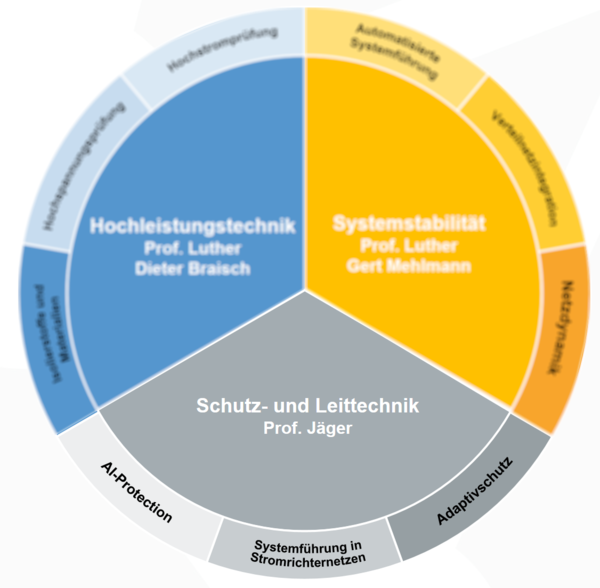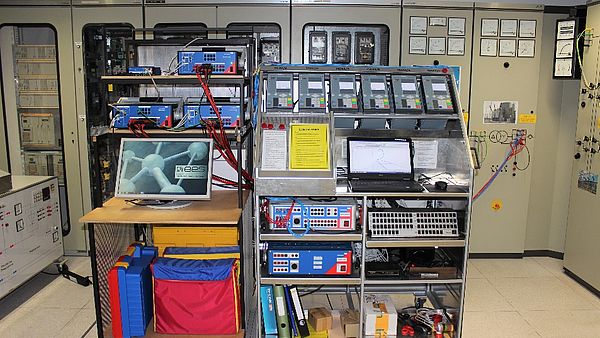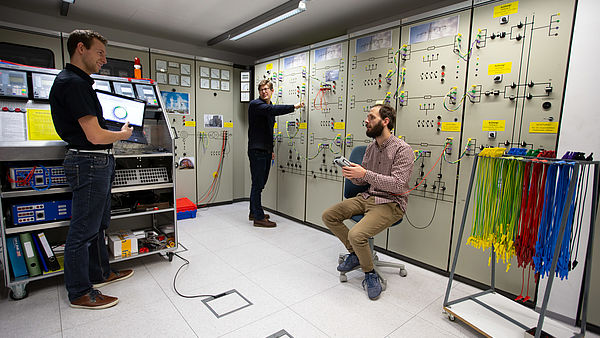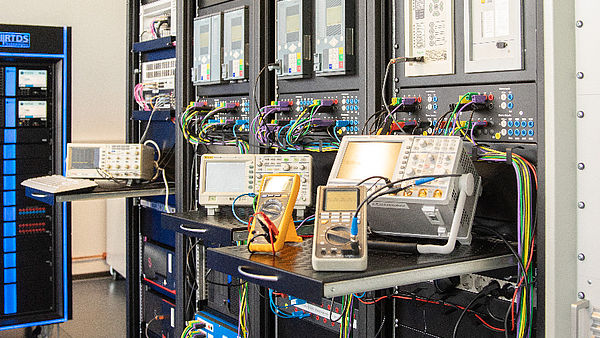Protection and control systems
Innovative concepts for maintaining security of supply in the course of the energy transition
Protection and control technology is essential for reliable and safe operation of electrical grids. Future decarbonized grid structures will further increase the demands on system control. Therefore, this field is firmly anchored in the research priorities of the chair and is represented here by three research areas.
Specialized groups of the protection and control systems
In the electrical supply networks of the future, a very wide range of different operating and fault conditions can be expected. These can be controlled less and less reliably with deterministic methods of protection and control technology.
The research area Artificial Intelligence - Protection deals with the application of pattern recognition methods in protection and control technology based on methods of "Deep Learning". The focus is on the generation of training data in the EMT domain on parallel computer structures for "supervised learning" as well as the development of suitably trained and decision-capable AI protection systems. Extensive laboratory and field tests in real networks support this work and prove a high functionality and flexibility of AI-Protection.
Decarbonized grids are technologically dependent on power converters. Therefore, power converters will decisively shape the grids of the future. The objectives of this research area are to develop new approaches to solutions for protection and control technology in converter-fed grids.
Important synergies can be generated by closely integrating grid protection and converter control systems. This results in new model-based grid protection methods for converter-dominated grid structures. The so-called "setting-less-protection" method will be developed from resource protection to grid protection and its functionality and flexibility will be improved by using Kalman filters as grid state estimators (fault detection) as well as grid parameter estimators (fault location). Laboratory tests of the new methods in our RTDS real-time simulation laboratory show their protection behavior adapted to power converter networks.
Adaptive protection generates new protection data based on the current network state and converts it into a new protection functionality. The new algorithm must be verified by simulation. This requires a system modeling of the network and the protection suitable for protection investigations. If several protection devices are to work together in a coordinated manner, the protection models are extended to include so-called networked adaptive protection functions.
If the verification shows only insufficient results, optimization algorithms of deterministic or heuristic type are used to improve the protection behavior. The added value of adaptive protection compared to existing protection systems in the case of frequent network topology changes underpins its high potential for use in future networks.





![[Translate to Englisch:] [Translate to Englisch:]](https://www.encn.de/fileadmin/_processed_/0/e/csm_Systemstabilitaet_LEES_Luther_b43f4ec3fb.jpg)
![[Translate to Englisch:] [Translate to Englisch:]](https://www.encn.de/fileadmin/_processed_/2/c/csm_Hochleistungstechnik_Luther_67cd49abd2.jpg)
![[Translate to Englisch:] [Translate to Englisch:]](https://www.encn.de/fileadmin/_processed_/e/2/csm_Echtzeitlabor_LEES_dbb145ed5f.jpg)